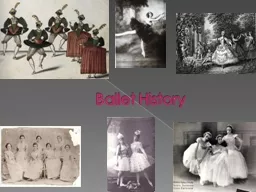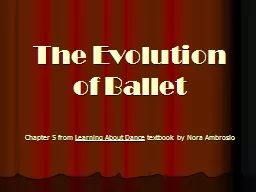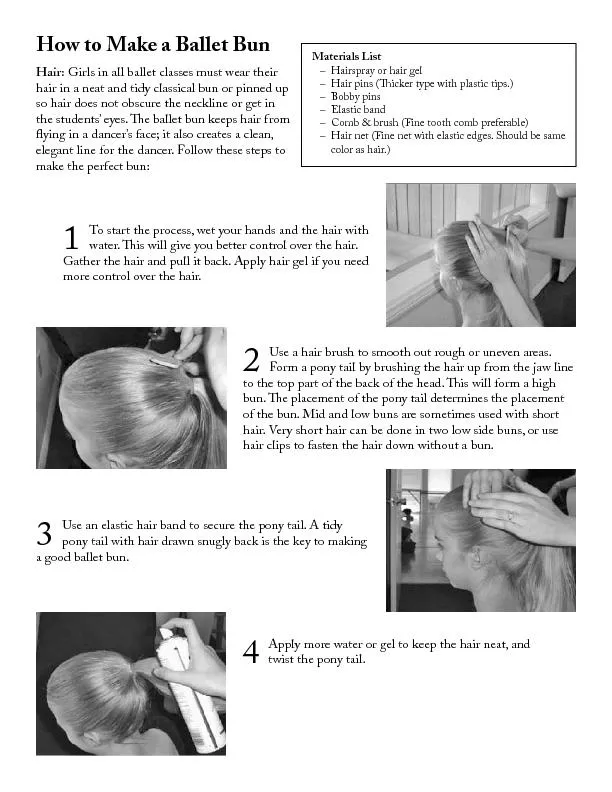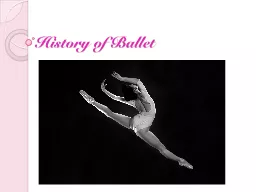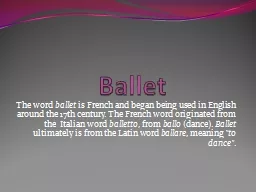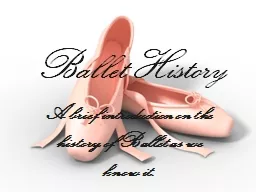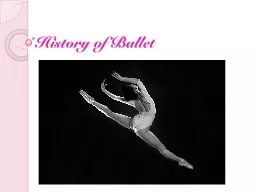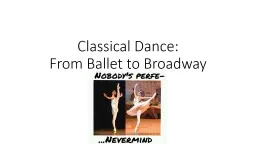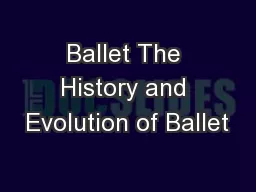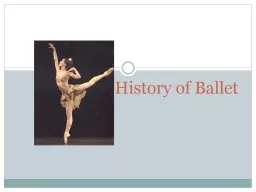PPT-Ballet History
Author : natalia-silvester | Published Date : 2015-10-24
Born1519 to powerful Medici family of Italy Orphan as a child Raised in a convent where she learned Latin and Greek Married at age 14 to Duke Henry II of Orleans
Presentation Embed Code
Download Presentation
Download Presentation The PPT/PDF document "Ballet History" is the property of its rightful owner. Permission is granted to download and print the materials on this website for personal, non-commercial use only, and to display it on your personal computer provided you do not modify the materials and that you retain all copyright notices contained in the materials. By downloading content from our website, you accept the terms of this agreement.
Ballet History: Transcript
Download Rules Of Document
"Ballet History"The content belongs to its owner. You may download and print it for personal use, without modification, and keep all copyright notices. By downloading, you agree to these terms.
Related Documents

